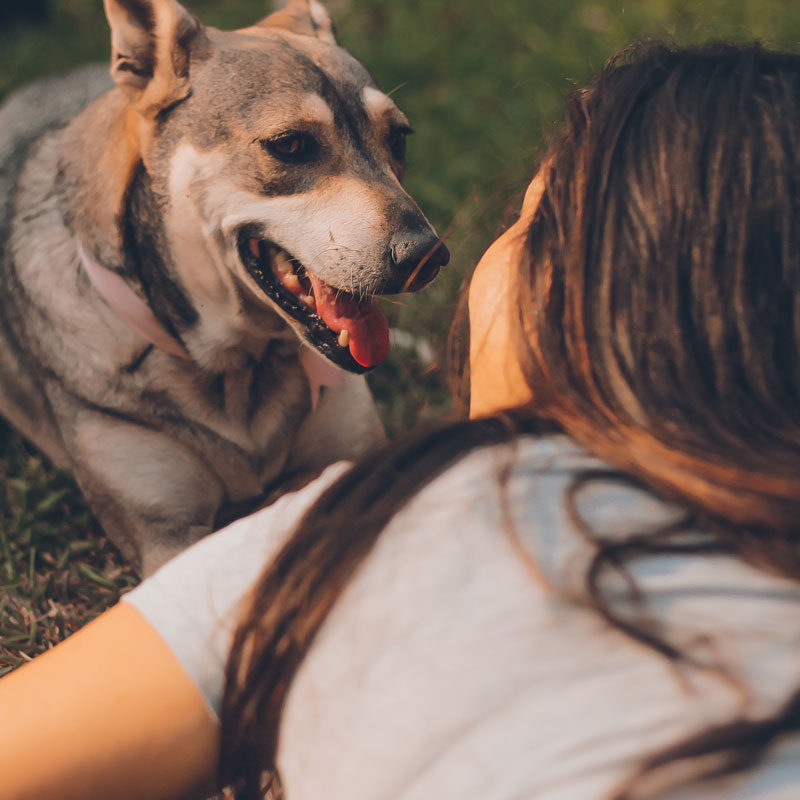Many people have found that they can wake a sleeping dog, cat or other animal by staring at it. Some find that merely looking at it does not work, but if they stare at it with an intention, thinking of giving it a treat if it wakes up, or taking a dog for a walk, the animal seems to wake up in response to their looks.
Some people have also found that this works the other way round: their animals can wake them by staring at them. Many people have told me that their dog wakes them in the night or in the morning when it wants to go out by sitting silently and looking at them, and many cats seem to do this too.
Some people have found they can wake their babies by staring at them and avoid staring at them if they want the baby to go on sleeping. Some people have also found they can wake their partners by staring at them.
I suspect that this phenomenon of waking by looks has a long evolutionary history. Animals are at their most vulnerable when they are asleep. If sleeping animals can tell when a potential predator is looking at them and wake up, they would have a better chance of survival than animals that stayed asleep.
If you have experienced waking people or animals by looks, or being woken yourself, do please let me know so that I can add your story to the database that my assistant Pam Smart and I are curating. You can email us at sheldrake@sheldrake.org.
I am particularly keen to see some experimental research on this subject, and if your dog, cat or other animal seems to know when you are staring at it and wakes up on a regular basis, do please get in touch with me if you are willing to do some simple randomised experimental tests, which basically involve looking at the animal at a randomised time within an experimental period of, say, 30 minutes, and, ideally, filming the sleeping animal throughout this period. If you would like to take part in this research, please email me at the address above and I will send you simple straightforward instructions for doing randomised tests with your animal. As far as I know, this has never been done before and I’m very interested to know what happens.
Rupert Sheldrake
 Rupert Sheldrake, PhD, is a biologist and author of more than 85 scientific papers and eight books, including Science and Spiritual Practices. He was a Fellow of Clare College, Cambridge University, a Research Fellow of the Royal Society, and a Frank Know Fellow at Harvard. He worked in India as Principal Plant Physiologist at the International Crops Research Institute ICRISAT, and also lived in the Benedictine ashram of Fr Bede Griffiths, in Tamil Nadu. From 2005-2010 he was the Director of the Perrott-Warrick Project for the study of unexplained human and animal abilities, funded by Trinity College, Cambridge. He is a Fellow of the Institute of Noetic Sciences, and also a Fellow of Schumacher College in England. He lives in London and is married to Jill Purce, with whom he has two sons.
Rupert Sheldrake, PhD, is a biologist and author of more than 85 scientific papers and eight books, including Science and Spiritual Practices. He was a Fellow of Clare College, Cambridge University, a Research Fellow of the Royal Society, and a Frank Know Fellow at Harvard. He worked in India as Principal Plant Physiologist at the International Crops Research Institute ICRISAT, and also lived in the Benedictine ashram of Fr Bede Griffiths, in Tamil Nadu. From 2005-2010 he was the Director of the Perrott-Warrick Project for the study of unexplained human and animal abilities, funded by Trinity College, Cambridge. He is a Fellow of the Institute of Noetic Sciences, and also a Fellow of Schumacher College in England. He lives in London and is married to Jill Purce, with whom he has two sons.
